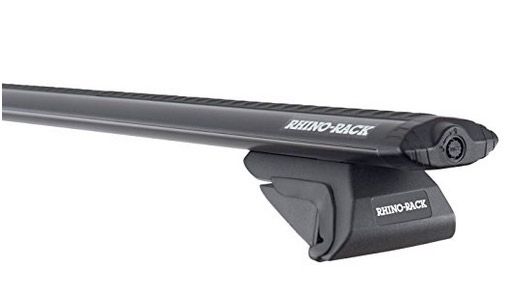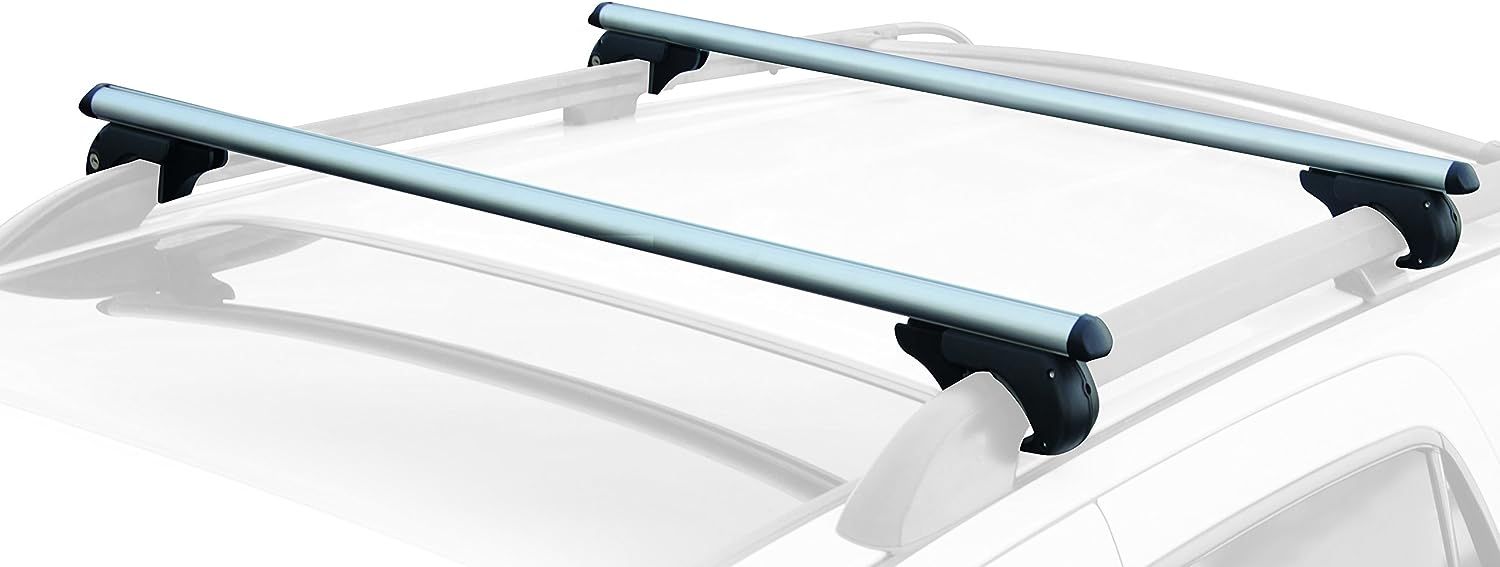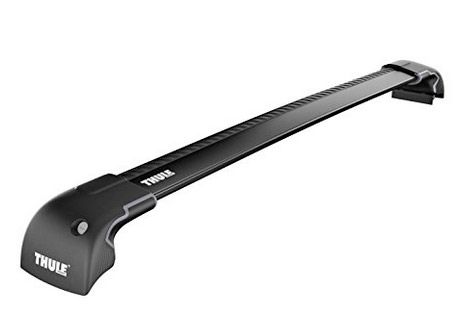Roof Rack Buyers Guide
Roof Rack Buyers Guide
The roof rack makes up the base of your rack & carrier system. Once your vehicle is equipped with a roof rack, you can add carriers for bikes, boards, boats, skis and any other gear your active life requires.
Product overview
Product overview
Product overview
Buyer's Guide
Truck Bed Bike Rack
All the different styles of bike rack has made it quite difficult for consumers to identify and decide on the right truck bed bike rack. All you need to know is that the correct rack has the capacity to not only fit your truck properly but also provide secure transportation without necessarily breaking the bank.
Undoubtedly, the wrong rack is a serious safety hazards, which can cause serious damage to both your bike and truck during transportation. Let's look at the considerations when choosing a truck bed bike track.
Pro Tip
For extra security make sure your roof rack can easily be locked to the car.

Do I need a roof rack?
That depends on what you want to carry. For bike owners there are other options like hitch or trunk mounted bike rack that eliminates the need for a roof rack. For more an in-depth guide to choosing the best bike rack, check out our Ultimate Bike Rack Buyer’s guide. If you have lots of other gear though like skis, kayaks or paddle boards you should consider the versatility of a good base roof rack system.
The basic roof rack systems explained
Because of all the different vehicles on the market, roof rack manufacturers have had to design their products to be as universal as possible. Selling a unique product for every vehicle and model is obviously impractical.
All other things being equal, a roof rack consists of two feet (or towers) that are connected by a cross bar. There are quite a few options though and it can be a bit confusing putting all the pieces together. The big differences are in how the feet are connected to the vehicle. The type of roof rack you buy will depend on the type of roof your car has.
How to choose a roof rack?
Step 1: Identify your roof type
The first step in choosing a base rack is identifying your car’s roof type. Depending on your car's roof type, you'll need a different type of base/foot/tower. The installation will also vary depending on your roof type.
Your car will have one of the following roof types:
- Normal roof
- Roof rails
- Flush/low profile roof rails
- Fixed points
- Rain Gutters
-

Normal/naked roof
These roof types are smooth and don’t have any rain gutters or rails. To fit a roof rack to these roofs, a base or foot sits on the bare roof and is clipped or hooked onto the door with a hook or mounting clamp. -

Raised Roof rails
Roof rails are most commonly found on SUVs and are factory fitted. This roof type is in many case the easiest to fit a rood rack to as there is already a sturdy base to attach the roof rack foot to. -

Flush/low profile roof rails
Similar to Raised Roof Rails, low profile or flush rails are factory fitted and provides a sturdy mounting point for a roof rack. Installation onto these types of roofs are considered very easy. -

Fixed points
Some manufacturers have seen the need to make fitting an aftermarket roof rack as easy as possible. In cases where the vehicle does not have a roof rail, a fixed mounting point has been added. These are often hidden underneath metal, plastic or rubber cover. Consult your manual if you cannot find them. A different type of fixed mounting point comes in the form of a channel that runs from the front to the rear of the vehicle. You would then use a special fit kit from the roof rack manufacturer to fit your roof rack. -

Rain Gutters
Most older cars have rain gutters on their roofs. Gutters are bent edges that channel water away from doors and other openings. Mounting a roof rack on a roof like this uses a foot or base that sits in the rain gutter and clamps to it. These were some of the first types of mounting hardware that came on the market.
We have included a helpful table with examples of three major manufacturer’s options for popular roof types. The actual product will depend on your specific vehicle’s make.
|
Roof type
|
Thule
|
Yakima
|
|
Normal roof
|
754
|
Baseline Towers
|
|
Roof rails
|
958X, 757, 775, 784, 794
|
Timberline Towers
|
|
Flush/low profile roof rails
|
753
|
Ridgeline Towers
|
|
Fixed points
|
753, 751, 959x
|
Skyline Towers
|
|
Rain Gutters
|
951
|
1A Raingutter
|
Step 2: Choose a cross bar
Here things are a little easier. The choices are profile, round or square and each manufacturer has their own example of each type. The profile type bars are definitely the most popular due to their reduced noise when traveling. The old square or round bars can drive you mad with the wind noise they generate.
Yakima bars
|
Thule bars
|
An honourable mention must go to the Thule Aeroblade. This cross bar features a textured surface that disturbs the airflow better than a smooth surface. This minimizes the sound energy generated by the bar thereby reducing wind noise.
Quality and value
Both these manufactures are committed to quality and this can be seen when looking at their products. Functionality and durability are qualities of all the products in their line-up. With comprehensive product testing you can be confident that these products meet and exceeds international quality standards. Thule is so proud of their rigorous testing, they even dedicated a Youtube playlist to showing it off.
- 2015 Subaro Forester 5 door
- 2016 Volkswagen Golf 5 door
|
|
Roof type
|
Load Capacity
|
Weight
|
Lock
|
|
Roof racks
|
|
|
|
|
|
Thule AeroBlade ARB53 + Thule Rapid Traverse Foot Pack
|
Fixed
|
165lbs/75kg
|
|
Yes
|
|
Thule WingBar Edge
|
Fixed
|
165lbs/75kg
|
|
Yes
|
|
Baseline Towers + Jetsream bars + SKS lock
|
Fixed
|
165lbs/75kg
|
16,4LBS/
|
Extra
|
|
Thule Rapid System 757
|
Roof rails
|
100kg
|
|
Yes
|
Frequently Asked Questions
-
Why do I need a roof rack?
If you are only transporting bicycles you have the option to buy a tow bar/hitch or trunk mounted bike rack. Having a proper roof rack though opens up a whole range of possibilities. Cargo boxes, kayak cradles, ski and snowboard carriers, surfboard racks. Even accessories that help trade professionals move their tools.
Systems are modular so it's easy to swop out a kayak cradle for a ski rack when the time comes.
Having a roof rack also allows for the use of a rooftop cargo box. Especially owners of smaller cars will benefit from the additional luggage space a roof box provides. They are also very handy for keeping wet gear out of the passenger cabin. There's nothing like a wet wetsuit to stink up a car!
-
How much gear can I load?
This will depend on three things:
- Your fitted roof rack's carry capacity
- Your vehicle's roof type
- The cross bars fitted
-
Will a roof rack affect my fuel consumption?
Roof racks can impact fuel efficiency due to increased wind resistance, but the extent of the impact varies depending on the rack type and cargo.
-
Are roof racks compatible with all car types?
Roof racks are typically designed to be compatible with various car types, but it's essential to ensure they match your specific vehicle's make and model.
-
What are the weight limits for roof racks?
The weight limits for roof racks can vary, so it's crucial to check your vehicle's manual or the rack's specifications to ensure safe loading.
-
Can I install a roof rack on my car myself, or do I need professional help?
You can install a roof rack yourself with some models, but for others or more complex setups, professional installation may be recommended.
-
What safety precautions should I take when using a roof rack?
Roof rack safety precautions include securing your load properly, staying within weight limits, and being mindful of the increased vehicle height.
-
Are there any legal regulations or restrictions regarding the use of roof racks?
Legal regulations regarding roof racks can vary by location, so it's essential to research any local laws or restrictions.
-
What are the advantages of a roof rack over other cargo-carrying options, like hitch-mounted racks or cargo boxes?
Roof racks offer advantages such as freeing up interior space, providing flexibility for different cargo types, and allowing for easy outdoor gear transport.
-
Are there roof racks specifically designed for certain outdoor activities, like kayaking or camping?
Roof racks designed for activities like kayaking or camping often include specialized mounts and features for those purposes.
-
How do I reduce wind noise when driving with a roof rack?
Reducing wind noise when driving with a roof rack can be achieved by using wind deflectors or adjusting the rack's positioning.
-
Can I use a roof rack for a rooftop tent setup?
Roof racks can be used for rooftop tent setups, provided they can support the tent's weight and size.
-
Are there any roof rack alternatives for vehicles without roof rails?
Alternatives to roof racks for vehicles without roof rails can include hitch-mounted racks or trunk-mounted carriers.
-
Are there any roof rack options for electric vehicles (EVs)?
Electric vehicles can often accommodate roof racks, but it's essential to consider any impact on aerodynamics and range.
-
How do I determine the correct spacing for crossbars on a roof rack?
Determining the correct crossbar spacing involves considering the width of your cargo and the rack's compatibility with your vehicle. Consult a fitment guide for detailed instructions.
-
How do I prevent theft of items on my roof rack or theft of the roof rack itself?
Preventing theft involves using locks and security measures for both your cargo and the roof rack itself to deter potential thieves.
-
Are there any roof rack safety tips for long-distance travel?
Long-distance travel with a roof rack requires regular load checks, secure tie-downs, and awareness of changing road conditions.
Other options
If you have a variety of stuff to move, a roof rack is the best option. As mentioned earlier, if you only want load your bike, you can opt for a tow hitch or trunk mounted bike rack.
Roof pads provide a temporary and cheap way to travel with surfboards SUPs and the like.
Read more: Roof Rack Buyers Guide
- Hits: 2269




